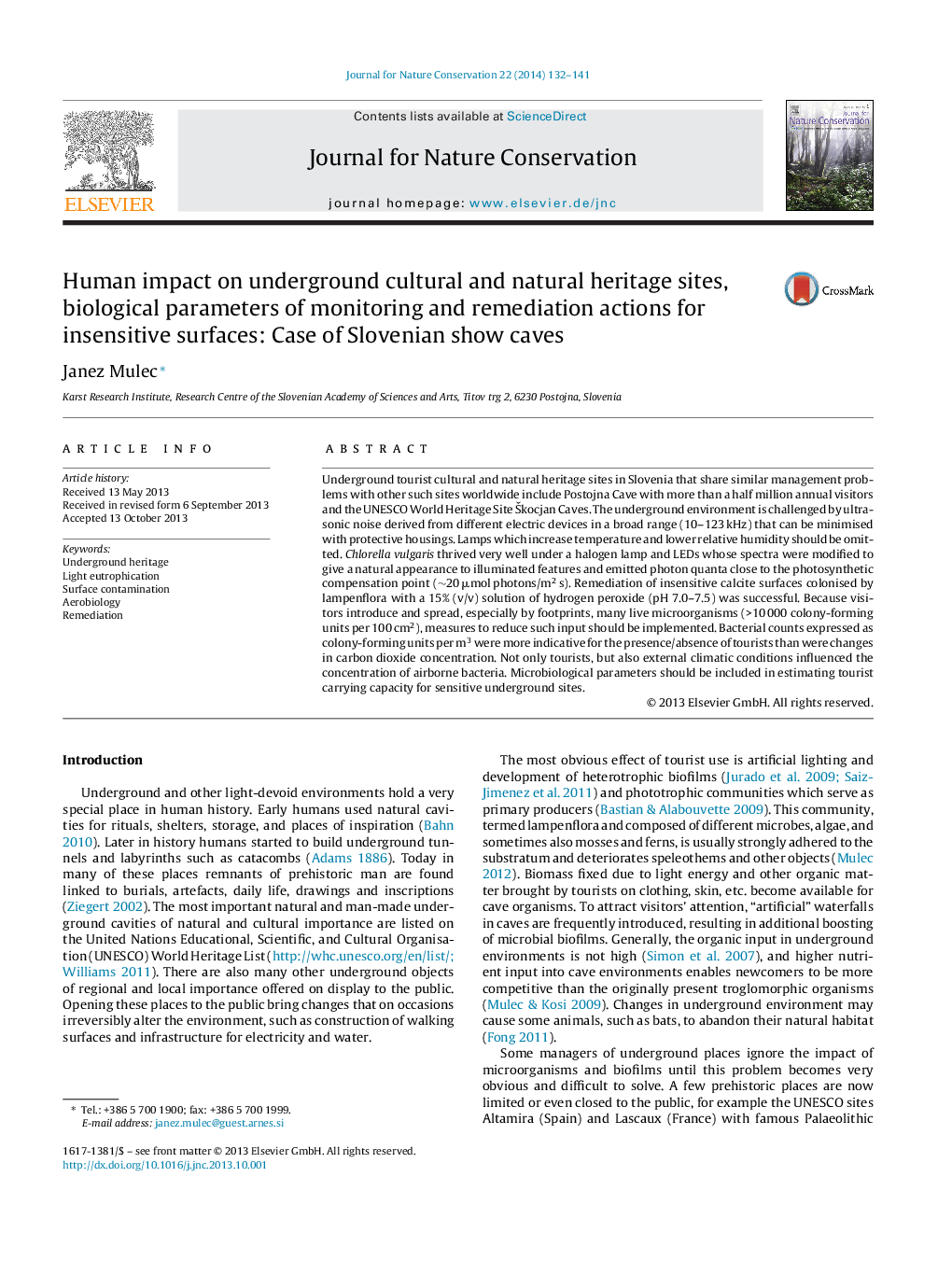| Article ID | Journal | Published Year | Pages | File Type |
|---|---|---|---|---|
| 6305475 | Journal for Nature Conservation | 2014 | 10 Pages |
Abstract
Underground tourist cultural and natural heritage sites in Slovenia that share similar management problems with other such sites worldwide include Postojna Cave with more than a half million annual visitors and the UNESCO World Heritage Site Å kocjan Caves. The underground environment is challenged by ultrasonic noise derived from different electric devices in a broad range (10-123 kHz) that can be minimised with protective housings. Lamps which increase temperature and lower relative humidity should be omitted. Chlorella vulgaris thrived very well under a halogen lamp and LEDs whose spectra were modified to give a natural appearance to illuminated features and emitted photon quanta close to the photosynthetic compensation point (â¼20 μmol photons/m2 s). Remediation of insensitive calcite surfaces colonised by lampenflora with a 15% (v/v) solution of hydrogen peroxide (pH 7.0-7.5) was successful. Because visitors introduce and spread, especially by footprints, many live microorganisms (>10 000 colony-forming units per 100 cm2), measures to reduce such input should be implemented. Bacterial counts expressed as colony-forming units per m3 were more indicative for the presence/absence of tourists than were changes in carbon dioxide concentration. Not only tourists, but also external climatic conditions influenced the concentration of airborne bacteria. Microbiological parameters should be included in estimating tourist carrying capacity for sensitive underground sites.
Related Topics
Physical Sciences and Engineering
Earth and Planetary Sciences
Earth and Planetary Sciences (General)
Authors
Janez Mulec,
